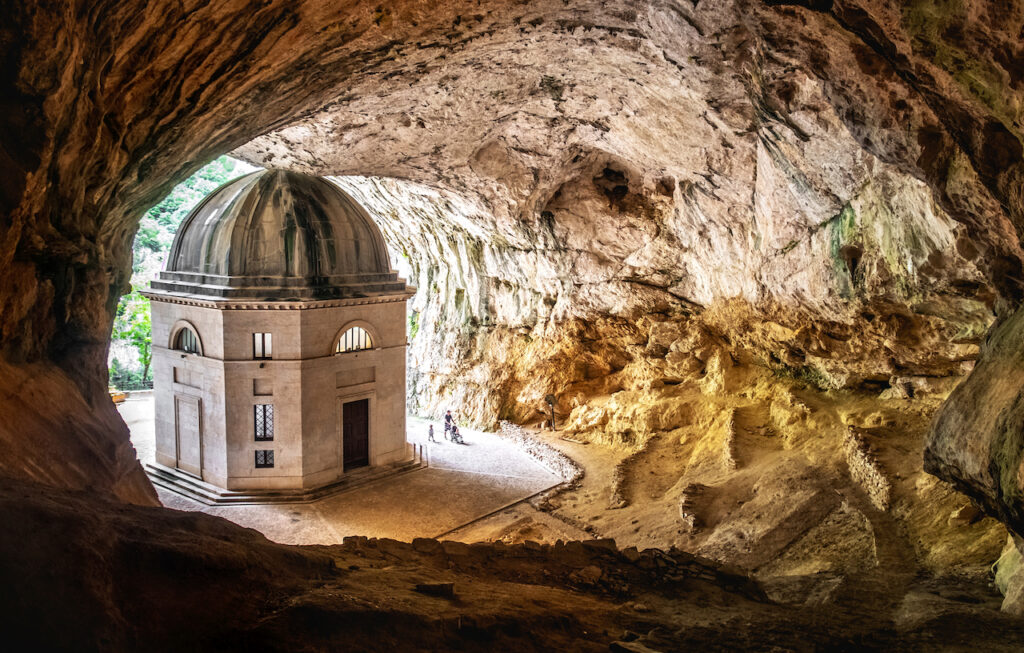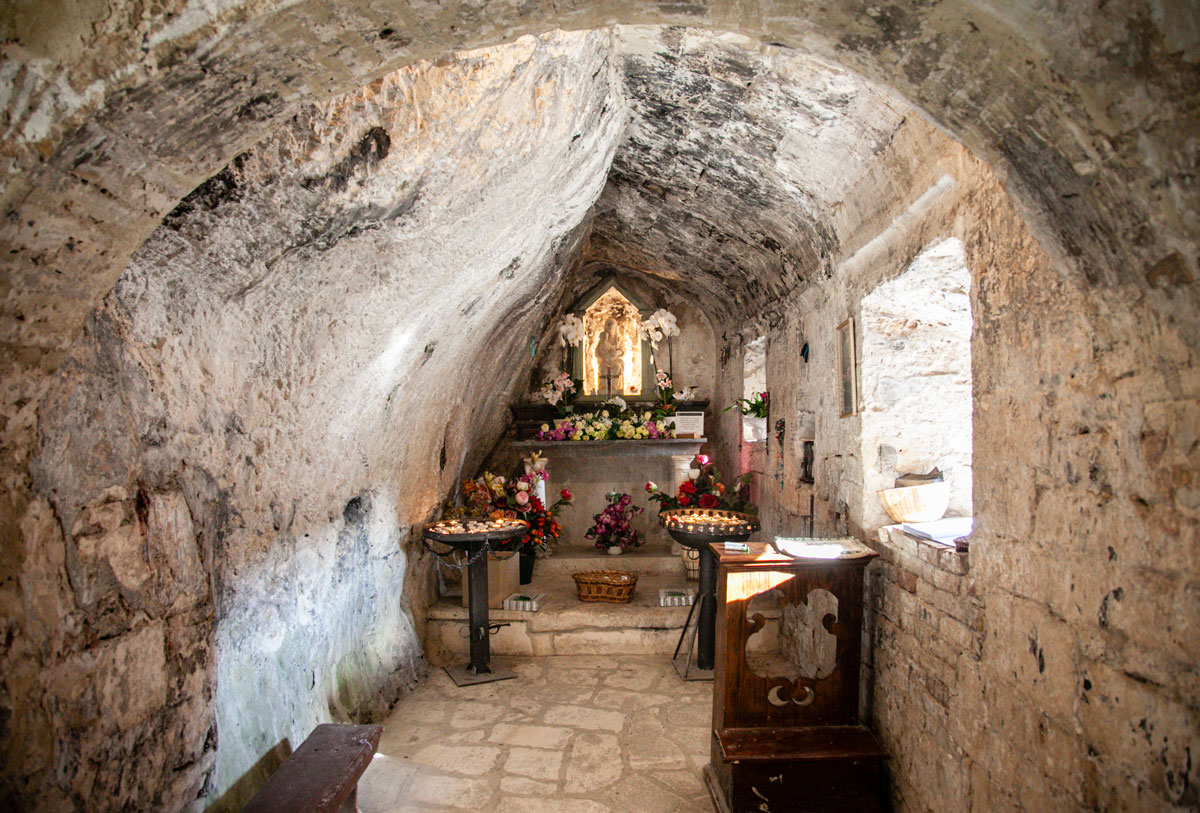Nestled in the picturesque landscape of Genga, Marche, Italy, the Hermitage of Santa Maria Infra Saxa is a captivating blend of nature, history, and architecture. Carved directly into the rock of the Frasassi Gorge, this remarkable sanctuary stands as a testament to the ingenuity of those who built it and the serene beauty of its natural surroundings.
A Historical Retreat
The Hermitage of Santa Maria Infra Saxa dates back to the early Middle Ages. Originally a monastic retreat for Benedictine nuns, it served as a place of solitude and contemplation. The hermitage’s name, which translates to “Santa Maria in the Rocks,” reflects its unique location within the limestone rock of the gorge. The nuns who lived here led a life of asceticism, dedicating themselves to prayer and reflection in a tranquil and isolated environment. Historical documents from the year 1000 mention the presence of a monastic community in the area, highlighting the long-standing religious significance of this site.

The hermitage’s remote setting allowed the nuns to remain secluded from the outside world, providing an ideal space for spiritual devotion and monastic life. The simple and austere architecture, with its rock-carved walls and small windows, reflects the humble nature of their existence, while still offering a profound sense of peace and serenity.
Architectural Marvels
Adjacent to the hermitage stands the Tempietto Valadier, an exquisite octagonal marble temple designed by the renowned architect Giuseppe Valadier. Commissioned in 1828 by Pope Leo XII, who was born in Genga, the temple is a striking contrast to the rugged rock formations of the gorge. Constructed in honor of the Madonna di Frasassi, the Tempietto’s pristine white travertine walls and its symmetrical design create a beautiful juxtaposition with the natural landscape.

The temple’s architecture is a perfect example of classical design fused with the organic beauty of the surrounding nature. The structure stands as a symbol of the devotion to the Madonna, with its refined marble exterior enhancing the spiritual aura of the place. The juxtaposition of the temple’s delicate design and the raw beauty of the gorge reinforces the harmonious relationship between human craftsmanship and nature.
The Experience of Visiting
Visiting the Hermitage of Santa Maria Infra Saxa offers a unique experience. As you explore the cave, the serenity of the surroundings invites quiet reflection. Inside, the walls are adorned with intricate carvings and frescoes that speak to the religious significance of the site. The atmosphere is one of tranquility and reverence, offering visitors a moment of escape from the modern world.

The panoramic views of the Frasassi Gorge from the hermitage are breathtaking, providing an opportunity to appreciate the natural beauty that surrounds this spiritual sanctuary. The stunning landscape, combined with the historical and architectural significance of the hermitage and the Tempietto Valadier, makes it a must-visit destination for those interested in history, architecture, and nature.
Conclusion
The Hermitage of Santa Maria Infra Saxa is more than just a historical monument—it is a living testament to the relationship between nature, faith, and human ingenuity. The harmony between the rock-carved sanctuary and the marble temple stands as a symbol of the enduring legacy of the Benedictine nuns who once called this place home, and the enduring importance of spiritual devotion. As a site of natural beauty and historical significance, it offers a rare glimpse into the past and provides visitors with an unforgettable experience.
Whether you are drawn to its architectural splendor, its historical depth, or its tranquil beauty, the Hermitage of Santa Maria Infra Saxa remains a hidden gem in the heart of Marche, Italy.

